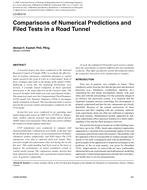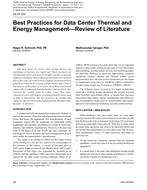In recent years, the air handling industry has begun using a flat oval shaped duct designed for low headroom spaces and restricted ceiling plenum spaces. The flat oval shape consists of a rectangular cross section coupled with a semicircular cross-section on each end of the rectangle. (1) The dimension of the cross section is given as minor axis versus major axis. The flat oval shape has considerably less flat surface than a comparable rectangular duct. This difference in relative flat surface areas has accoustical, structural, and installation significance. Since these ducts are relatively new to the air handling industry, test data are somewhat scarce.
With the idea in mind that a method of traversing flat oval ducts and a flow coefficient for flat oval ducts would greatly simplify the measurement of flow in these duct systems, the objectives of this research were: (1) To develop a method of traversing flat oval ducts to obtain the mean velocity within the duct; and (2) to develop a correlation between flow coefficient and some dimensionless parameter. This parameter, in conjunction with a single point velocity measurement at the duct centerline, would be used to determine the mean velocity within the duct.
Since these ducts are mainly utilized in heating, ventilating and air conditioning systems, fully developed flow is seldom obtained. Therefore, this investigation was done in the duct entrance region prior to fully developed flow. To correspond to the actual conditions of duct application, this investigation was done with isothermal air and turbulent flow.
Citation: ASHRAE Transactions, Volume 78, Part 2, Nassau, Bahamas
Product Details
- Published:
- 1972
- Number of Pages:
- 7
- File Size:
- 1 file , 480 KB
- Product Code(s):
- D-NA-2252


